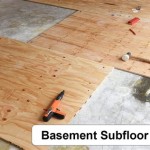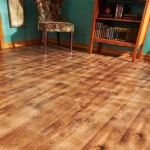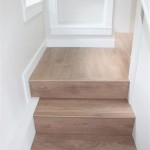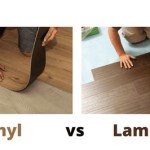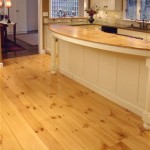Expert Advice on Hardwood Flooring in the USA
Hardwood flooring remains a highly sought-after choice for homeowners across the USA, appreciated for its durability, timeless aesthetic, and potential to increase property value. Navigating the complexities of selecting, installing, and maintaining hardwood flooring requires careful consideration and, often, expert guidance. This article provides in-depth advice on crucial aspects of hardwood flooring in the USA, covering everything from species selection to long-term care.
Understanding Hardwood Species and Grades
The foundation of a satisfactory hardwood floor lies in choosing the right species and grade of wood. The specific characteristics of each species significantly impact the floor's appearance, hardness, resistance to moisture, and cost. Furthermore, wood grades determine the aesthetic consistency and the presence of natural imperfections, which can influence the overall look and feel of the floor.
Species Selection: The Janka hardness scale is a standard measure used to rate the relative hardness of different wood species. Red oak, with a Janka rating of 1290, is often considered the baseline for comparison. Species harder than red oak, such as Brazilian Cherry (Janka 2350) or Hickory (Janka 1820), offer superior resistance to dents and scratches, making them suitable for high-traffic areas or homes with pets and children. Softer woods, like American Cherry (Janka 950) or Black Walnut (Janka 1010), provide a more rustic and warm aesthetic but are more susceptible to damage. The choice should balance aesthetic preferences with the expected wear and tear.
Beyond hardness, other species characteristics are crucial. Oak, for example, is known for its prominent grain pattern and readily accepts stains, making it a versatile choice. Maple offers a more subtle grain and a lighter color, creating a contemporary look. Exotic hardwoods, imported from regions outside the USA, often feature unique colors and grain patterns but may come with higher costs and sustainability concerns. Consider the wood's stability in response to changes in humidity. Some species, like engineered hardwoods with a multi-layered core, are less prone to expansion and contraction than solid hardwood.
Understanding Wood Grades: Hardwood lumber is graded based on its appearance and the presence of imperfections, such as knots, mineral streaks, and color variations. The National Hardwood Lumber Association (NHLA) sets the standards for hardwood grading. The highest grade, typically termed "Select & Better," exhibits the fewest imperfections and the most consistent color, resulting in a clean and uniform appearance. "Common" grades, such as No. 1 Common and No. 2 Common, feature more character markings and color variation, offering a more rustic and less expensive option. Character grade hardwoods are known for their larger knots, cracks, and variations, giving a unique, reclaimed appearance. The choice of grade depends on the desired aesthetic and budget. Lower grades are often more affordable but may require more careful selection and installation to avoid excessive waste.
Consider prefinished versus unfinished hardwood. Prefinished flooring boasts a factory-applied finish, offering greater convenience and consistent finish quality. Unfinished flooring allows for custom staining and finishing, enabling a personalized look. The trade-off is the added time and cost of on-site finishing, as well as the potential for dust and fumes during the process.
Installation Methods and Subfloor Preparation
Proper installation is paramount to the longevity and performance of a hardwood floor. The subfloor must be properly prepared to provide a stable and level foundation. The chosen installation method depends on the type of hardwood (solid or engineered), the subfloor material (wood or concrete), and the specific environmental conditions.
Subfloor Requirements: Regardless of the installation method, a clean, dry, and level subfloor is essential. For wood subfloors, proper inspection is crucial to identify and repair any loose boards, squeaks, or damage from water or pests. The subfloor should be flat within 3/16 inch over a 10-foot span; any unevenness must be corrected by sanding, patching, or using self-leveling compounds. Moisture is a hardwood floor's greatest enemy. Excess humidity can cause the wood to expand, leading to cupping, warping, or buckling. Conversely, excessively dry conditions can cause the wood to contract, resulting in gaps between boards. The subfloor must be tested for moisture content before installation. Wood subfloors should typically have a moisture content of no more than 12%, while concrete subfloors should be tested using a calcium chloride test to ensure they meet the manufacturer's recommendations.
Installation Methods: Several installation methods are commonly used for hardwood flooring in the USA.
* Nail-Down/Staple-Down: This traditional method is typically used for solid hardwood flooring installed over a wood subfloor. The boards are mechanically fastened to the subfloor using nails or staples. This method provides a secure and stable installation but is not suitable for concrete subfloors. * Glue-Down: This method is suitable for both solid and engineered hardwood flooring and can be used over wood or concrete subfloors. The boards are adhered to the subfloor using a specialized adhesive. This method provides excellent stability and minimizes movement but requires careful subfloor preparation and the use of a high-quality adhesive. * Floating: This method is primarily used for engineered hardwood flooring. The boards are not directly attached to the subfloor but are instead connected to each other, forming a "floating" floor. A thin foam underlayment is typically installed between the flooring and the subfloor to provide cushioning and reduce noise. This method is relatively simple and quick to install, making it a popular choice for DIY projects. * Click-Lock: This system is very popular with DIYers and professionals alike. Engineered hardwood (and some laminate) planks feature interlocking edges that snap together, creating a seamless and stable floor without the need for nails, glue, or staples. This makes installation quicker and easier, and the floor can often be walked on immediately after installation is complete.Acclimation is a vital step in the installation process. Hardwood flooring needs time to adjust to the temperature and humidity conditions of the installation environment. The acclimation period typically lasts for several days, depending on the species and the prevailing conditions. Failure to properly acclimate the flooring can lead to problems after installation, such as gaps, cupping, or buckling.
Maintaining and Protecting Your Hardwood Floors
Proper maintenance is essential to preserving the beauty and extending the lifespan of hardwood flooring. Regular cleaning, preventative measures, and timely repairs can help keep the floor looking its best for years to come. Ignoring these can lead to more costly repairs down the line.
Regular Cleaning: The frequency of cleaning depends on the amount of foot traffic and the level of dirt and debris. As a general rule, hardwood floors should be swept or vacuumed regularly (at least once a week) to remove loose dirt and dust. A microfiber mop is effective for cleaning hardwood floors without scratching the finish. Avoid using wet mops or steam cleaners, as excess moisture can damage the wood. Use a hardwood floor cleaner specifically formulated for the type of finish on the floor. Avoid using harsh chemicals, abrasive cleaners, or waxes, as these can dull or damage the finish.
Preventative Measures: Taking preventative measures can significantly reduce the risk of damage to hardwood floors.
* Place mats at entrances to trap dirt and moisture. * Use area rugs in high-traffic areas to protect the finish. * Attach felt pads to the legs of furniture to prevent scratches. * Avoid wearing shoes with high heels or cleats on hardwood floors. * Trim pets' nails regularly to prevent scratches. * Clean up spills immediately to prevent staining or water damage. * Maintain consistent humidity levels in the home to minimize expansion and contraction.Repair and Refinishing: Even with careful maintenance, hardwood floors may occasionally require repair or refinishing. Minor scratches and dents can often be repaired using touch-up kits or wood putty. More significant damage, such as deep scratches, gouges, or water damage, may require professional repair. Refinishing is a process that involves sanding down the existing finish and applying a new coat of sealant. Refinishing can restore the floor to its original beauty and extend its lifespan. The number of times a hardwood floor can be refinished depends on the thickness of the wear layer. Solid hardwood floors can typically be refinished multiple times, while engineered hardwood floors may only be refinished once or twice, or not at all, depending on the thickness of the veneer. Consult with a flooring professional to determine the best course of action for repairing or refinishing your hardwood floor.
The geographical location within the USA can impact hardwood flooring choices. Regions with high humidity, such as the Southeast, may benefit from engineered hardwoods or species with greater moisture resistance. Drier climates, common in the Southwest, require careful humidity control to prevent excessive shrinkage and gapping in solid hardwood floors. Consider the local climate when selecting and maintaining hardwood flooring.

Flooring Types Pros And Cons Mr Handyman

Hardwood Floor Care Solutions Ub Hardwoods Plymouth Mn

Flooring Midwest Construction Experts

2025 Flooring Trends America

How To Install Hardwood Flooring Steps Regarding The Perfect Installation Of

How To Clean Wood Floors Neighborly Expert Tips

Blog Mr Wood Varnish

Hardwood Flooring The Home

Bonner Springs Svb Wood Floors

Arlington County Hardwood Flooring S Installation Refinishing Sanding Carpeting Virginia M Floors
See Also

